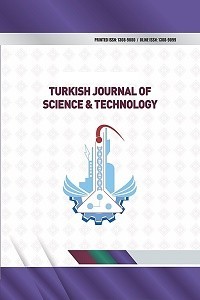Threats Detection in IoT Network
Threats Detection in IoT Network
Internet of things, IoT, machine learning network security, attack detection.,
___
- Butun I, Österberg P, Song H. Security of the Internet of Things: vulnerabilities, attacks and counter measures. IEEE Commun Surv Tutorials 2019; 616-644.
- Alotaibi B, Alotaibi M. A stacked deep learning approach for IoT cyber attack detection. J Sens 2020.
- Abu Kwaider H. HEIoT2021. [Online]. Available: https://drive.google.com/file/d/1WAHorikhN9fw9T1YpOkH6DwvnbwdjiHC/view?usp=sharing. 2021.
- Xu T, Potkonjak M, Wendt J. Security of IoT systems: design challenges and opportunities. ACM International Conference on Computer-Aided Design 2014; IEEE. pp. 417-423.
- Bull P, Austin R, Popov E, Sharma M, Watson R. Flow based security for IoT devices using an SDN gateway. IEEE 4th International Conference on Future Internet of Things and Cloud 2016; IEEE. pp. 157-163.
- Farahnakian F, Heikkonen JA. Deep auto-encoder based approach for intrusion detection system. 20th International Conference on Advanced Communication Technology 2018; pp. 178-183.
- Moukhafi M, El Yassini K, Bri S. A novel hybrid GA and SVM with PSO feature selection for intrusion detection system. Int J Adv Sci Eng Technol 2018; 4(5): 129-134.
- Khalvati L, Keshtgary M, Rikhtegar N. Intrusion detection based on a novel hybrid learning approach. J AI Data Mining 2018; 6(1): 157-162.
- Ferrag M, Shu L, Hamouda D, Choo R. Deep learning-based intrusion detection for distributed denial of service attack in agriculture 4.0. Electronics 2021; 10(11): 1257.
- Latif S, Zou Z, Idrees Z, Ahmad J. A novel attack detection scheme for the industrial Internet of Things using a lightweight random neural network. IEEE Access 2020; (8): 89337- 89350.
- Ullah I, Mahmoud Q. An anomaly detection model for IoT networks based on flow and flag features using a feed-forward neural network. IEEE 19th Annual Consumer Communications & Networking Conference 2022; pp. 363-368.
- Ullah I, Mahmoud Q. A scheme for generating a dataset for anomalous activity detection in IoT networks. Advances in Artificial Intelligence: 33rd Canadian Conference on Artificial Intelligence, Canadian AI 2020, Ottawa, ON, Canada, 13–15 May 2020, Proceedings: pp. 508–520.
- Lopez Alma D, Mohan Asha P, Nair S. Network traffic behavioral analytics for detection of DDoS attacks. SMU Data Science Review 2019; 2(1): Article 14.
- ISSN: 1308-9080
- Başlangıç: 2009
- Yayıncı: Fırat Üniversitesi
Berivan ÖZAYDIN, Ramazan TEKİN
Dawar Hama Khalid MOHAMMED, Fatih KÜLAHCI, Ahmet SAİT ALALI
A Hierarchical Reinforcement Learning Framework for UAV Path Planning in Tactical Environments
Molecular Docking Study on Interaction of Polyvinyl Alcohol (PVA) with Group IA Bacteriocin
Nihan ÜNLÜ, Arzu ÖZGEN, Canan AKSU CANBAY
Murat ŞEN, Osman YİĞİD, Orhan ÇAKAR
Deep Transfer Learning-Based Broken Rotor Fault Diagnosis For Induction Motors
Fırat DİŞLİ, Mehmet GEDİKPINAR, Abdulkadir SENGUR
BP19: Tek Boyutlu İkili Modele Dayalı Doğru Bir Sesli Şiddet Tespit Modeli
Arif Metehan YILDIZ, Tuğçe KELEŞ, Kübra YILDIRIM, Sengul DOGAN, Türker TUNCER
